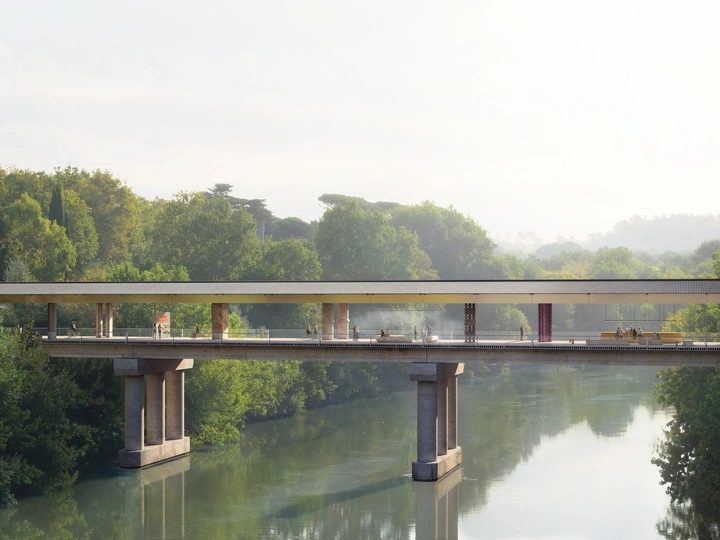Spolia

VELIA is a collective founded in 2024, following previous experience in international studios and research centers including Herzog & de Meuron (Basel), David Chipperfield Architects (Berlin), and the Museum of Modern Art (New York). The studio's work ranges from construction to research and academic teaching. It has received awards in several international competitions, has been shown at the 19th Venice Architecture Biennale, the MAXXI and Mattatoio museums in Rome, and has been published in specialist and general magazines. Members of the group have held roles as guest critics, speakers, or teachers at various academic institutions, including Cornell University, the Architectural Association, the Accademia di Architettura di Mendrisio, the IED, and the Pantheon Institute in Rome.
Lukas Ingold is an architect based in Zurich. He studied architecture at the Bern University of Applied Sciences and at ETH Zurich. He received his doctorate from ETH Zurich, where he also taught and conducted research in the field of structural design, first as a research assistant (2014–2018) and then as a lecturer (2018–2023). In 2014, he founded his own studio, Lukas Ingold Architecture.
Too often, the sea is imagined in opposition to the land, overlooking the dense network of waterways and infrastructures that mediate commercial, social, and mobility flows. Rome, in particular, has long emphasized its symbolic connection to the Tyrrhenian Sea – a relationship historically sustained, given its inland position, through the Tiber River. Major infrastructural works (bridges, embankments, canals, and dams) transformed the river into a strategic corridor linking the capital to the port and, through it, to the Mediterranean.
Today, many of these infrastructures, now decommissioned or underused, preserve latent potential for urban regeneration. Their transformation can trigger the revitalization of marginal or neglected areas, foster the creation of public spaces, and re-activate historical memory and local identity. Furthermore, such operations represent opportunities for environmentally conscious strategies that promote adaptive reuse, circular economy principles, and the use of low-impact, locally sourced materials.
Within this framework emerges "Spolia", a manifesto-project that reinterprets the ancient Roman practice of reuse – not of columns and marbles, but of fragments of modern infrastructure. Taking the piers of the Bailey bridge, the only surviving trace of a now-abandoned 1962 structure, the project proposes their recovery and activation for public use, preserving their testimonial value while limiting further land consumption.
Along the Tiber, the adaptation of existing infrastructures becomes a way to reweave connections between embankment and river, land and water, in a dialogue between historical legacy and contemporary innovation. "Spolia" suggests that the reconversion of industrial archaeology may serve as a catalyst for sustainable development and social cohesion, while reactivating the latent role of water routes within the Mediterranean urban landscape.